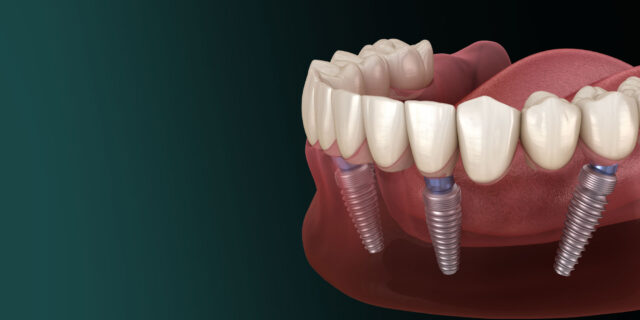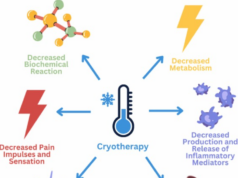Types of Dental Implants
Dental implants are a permanent solution to tooth loss, and they are becoming increasingly popular with people of all ages. They provide an artificial root for a dental crown or bridge and can be used to replace one or more missing teeth.
There are several different types of dental implants in Sydney available today, each with its unique benefits. In this article, we will take a look at the various types of implants and how they can help improve your oral health.
Endosteal Implants: Endosteal implants are the most common type of implant used today. This type is surgically embedded into the jawbone and is made from either titanium or zirconia-based materials that fuse directly with the bone over time. Endosteal dental implants provide excellent support for single crowns, multiple crowns bridges, dentures, and even full arch restorations when multiple implants are placed in strategic locations around the mouth.
Subperiosteal Implants: Subperiosteal Implants consist of metal frames that sit atop the jawbone under gum tissue but above the bone level to allow for healing after surgery has occurred.
Average Cost of Dental Implants

For many people, dental implants are the best way to replace missing teeth. They provide a natural-looking and long-lasting solution that can be used to restore confidence and improve oral health. However, while dental implants can be a great investment in your overall well-being, the cost of this procedure is often a major concern for prospective patients.
On average, the cost of a single dental implant ranges from $2,400 to $3,000. This price includes both the implant itself and any associated procedures such as bone grafting or sinus lifts that may be necessary before placing the implant. The final cost will depend on factors such as the type of material used for the implant and how complex your case is.
The total cost for an entire set of implants typically costs between $15,000 – 25,000 depending on how many teeth need to be replaced and additional procedures needed such as bone grafts or sinus lifts. It’s important to keep in mind that this figure does not include any other expenses related to the placement of additional restorations like crowns or bridges after your initial surgery is complete – those costs would need to be added into your budget separately should you choose them in addition to your implants themselves.
Factors Affecting Dental Implant Costs

When it comes to dental implants, the cost can vary greatly depending on several factors. Dental implants are a permanent solution to missing teeth, and they can last a lifetime with proper care. For this reason, many people choose them despite their high cost. It is important to understand what is included in the cost of dental implants and how various factors can impact the total price.
The first factor that affects dental implant costs is the type of implant being used. There are two main types: endosteal and subperiosteal implants. Endosteal implants are inserted directly into the jawbone for a secure fit, while subperiosteal implants rest atop the jawbone rather than being embedded into it. The type chosen will determine not only the cost but also how long it takes for healing after the installation as well as its overall durability over time.
The second factor affecting costs is the location of placement concerning surrounding teeth or other oral structures such as sinuses or nerves that may need extra attention during installation or require special tools for successful placement without causing damage to these areas. Additionally, if multiple teeth need replacing simultaneously, this will drive up costs due to longer surgery times and more work needed by your dentist or oral surgeon who performs the procedure.
Insurance Coverage for Dental Implants

Dental implants are a common and effective solution for those who are missing a tooth or multiple teeth, but the cost can be expensive and many people might not have enough money to cover the cost of the procedure. Fortunately, insurance coverage for dental implants is available in some cases, making them more affordable.
When considering insurance coverage for dental implants, it’s important to note that insurance companies will typically only cover them if they are deemed medically necessary. Generally speaking, this means that they must be used as part of a reconstruction effort due to an accident or injury rather than simply as a cosmetic enhancement. If you do qualify for coverage based on medical necessity, your insurer may pay up to 80-90% of the total cost with you being responsible for any remaining balance after deductibles and copays have been met.
In addition to medical necessity criteria, other factors determine whether you’ll receive coverage from your insurers such as type of policy and provider network. For example, some insurers may limit coverage to certain implant manufacturers or require that procedures be performed by providers within their network to qualify for reimbursement.
Alternatives to Traditional Dental Implants

Dental implants are a popular solution for replacing missing teeth, but they may not be the right fit for everyone. Fortunately, several alternative treatments can replace missing teeth and improve your smile.
Removable Dentures: Removable partial or full dentures can be a great alternative to traditional dental implants. They’re an inexpensive option that can replace both one or several missing teeth. Dentures are custom-made to fit comfortably in your mouth and they look natural when worn properly. Although they will need to be cleaned regularly, dentures provide a natural-looking replacement for missing teeth without any invasive surgery required.
Bridges: Another alternative to dental implant bridges, which involve placing a false tooth between two healthy ones that have been crowned and strengthened with crowns on either side of the gap left by the missing tooth/teeth. Unlike traditional dental implants, bridges do not require any surgery as they simply “bridge” the gap with artificial materials like porcelain or metal alloy structures held in place by crowns on either side of the gap in your smile line due to your tooth loss.
Conclusion
The cost of dental implants can vary greatly depending on a variety of factors. The type of implant chosen, the complexity of the procedure, and other factors such as geographic location and insurance coverage can all have an impact on the total cost. It is important to do research and consult with a qualified dentist to ensure that you are getting the best treatment for your individual needs at an affordable price.







